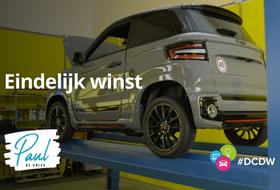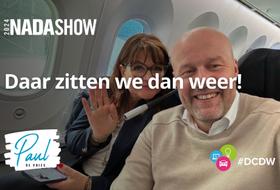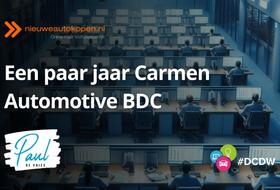
Are you sure the referring traffic on your dealer website is correct?
6 augustus 2018, PaulDifference in http and https website destroys your insight into your marketing investments as a car company!

Many of today’s conversations and discussions concern the value of portals. These conversations are so persistent that BOVAG thought it was time to come up with their own portal. That should become a portal that should be of value. Fine of course, but there is something more important: the question is whether we determine the value in the right way?
In Google Analytics you can see who delivers the valuable visitors. And valuable visitors are visitors who convert into leads and ultimately into sales. Of course I don’t have to explain that you have to measure both online and telephone leads through Analytics, as well as the chat conversions. Not only the last click, but also the supporting conversions in Google Analytics give you a good insight into the value of the lead. Not every visitor will convert at the first click visit, but perhaps at the second or the third. The source that delivered the first visit must also be rewarded if you really want to measure.
Now, a Google update has recently gone live, which makes it clearer in the Google Chrome browser which website is or is not protected by means of the green lock, the proof of a secure website. I recently wrote an article about it, but now that more information is available, the Google update appears to be going beyond what we thought.
Safety
If Google can choose between a secure (https) and an unsecured website (http), it will always give priority to the secure site. That site is therefore higher in the search results. Moreover, with the whole privacy law story in mind, you want to show that you are doing well and your website is well secured. That is why a https site is essential.
If you seem to have adjusted your website to SSL certificate, and thus have a secure connection, the homepage shows that the site is working safely. That doesn’t mean that that is actually the case. Your website is only safe when every page shows that green lock. And there’s the crux of the problem.
Good and bad traffic
The problem could be much deeper in your website, think especially of the pages that get, receive and trigger many referring traffic. These pages, the VDP pages, or your stock pages, often do not have an SSL connection or are in a redirect: a loop where an http address is present. The redirect provides an issue in Google Analytics. After all, if you advertise on Gaspedaal and Marktplaats and you have a direct link to the VDP page on your website, and that VDP page has an http somewhere in the loop / redirect, then Google Analytics will pass it as direct traffic. With that, the value of your marketing investment comes down and you can no longer see any difference between good and bad traffic.
Necessary steps
Use the Chrome app ‘redirect path’ to see how your website is doing when it comes to this. Furthermore, your website builder must follow the necessary steps to ensure that everything is Google-compliant. See:
- Step-by-step plan to https
- Https has disappeared?
- What is this again?
A double check must also take place at all VMS software vendors. Is everything correctly converted to https and aren’t all URLs in default still on http?
Rogier Smulders from Gaspedaal showed me using an example. We compared two URLs. Both start with https which then goes somewhere to an http variant.
Example: the URL structure of Marco van Beek:
- https: //www.marcovanbeek.nl/auto/occasion-2015-mercedesbenz-mlasse-ml-350-bluetec-amg-aut-pano-trekhaak-distronic- verkocht-steenwijkerwold-nl/29028657/
When I click from Marketplace the URL looks like this:
- https: //www.marcovanbeek.nl/auto/zoeken/29028657/
The only constant is the ID number 29028657. If the vehicle management system (VMS) is therefore in default on http://www.marcovanbeek.nl/auto/zoeken/ and only the ID number is pasted, then the hygiene at the VMS and / or Hexon is not correct and that will have to be solved. So here too there must be https and information must be added to the URL (hygiene).
Now I pick these up, since I myself analyze a lot of data for Marco van Beek and a number of things do not match the data from Marktplaats. So search, one data point never tells the whole story. The knowledge and insights of Rogier help greatly to provide clarity and thus improve the online automotive.
I have looked at all the major website builders in the Netherlands and everywhere these errors are still in various dealer and car websites. It is therefore important to tackle this as quickly as possible and in the right way. Perhaps this is not always the initiative from the client and the builders will have to deal with this more proactively. Whether the hygiene factor, the provision of information via the URL, now lies more with the VMS, Hexon or the website builder, I cannot determine at a distance, but that this kind of basic information must be fired directly for and on behalf of the car company, because only then the ROI can be displayed on their marketing publication correctly.
Update:
From Hexon I got the following technical explanation regarding this topic:
For car companies that are connected to a software system that uses DoorLinking Stock (such as Marco van Beek in your example), Hexon is responsible for passing on the deep link to the portals. This deep link comes either from the stock management system (if filled in there) or from the portal that feeds your own website (Dealer E-Process in your example).
In both cases, Hexon does not apply any operations to this and passes this deep link on to the portals one by one (if they have any support for mentioning a deep link with the advertisement).
In your example (and at most other car companies) the https-to-http problem cannot be found at Hexon.
For the car companies where Hexon (whether or not via a software supplier as a reseller) provides the stock module on its own website and this is still integrated as an iFrame, the car company has the choice to do this as HTTP or HTTPS.
About Paul de Vries
Paul de Vries became a Key Automotive Spokesperson at eBay (Marktplaats) after selling Nieuweautokopen.nl to eBay back in 2015. Paul is the founder and CEO of the #DCDW Academy and the presenter of the #DCDW Podcast. He is also a by dealers and importers frequently asked speaker in the online automotive industry. Paul is the winner of the prestigious Lighthouse Award 2016 in the U.S.! `Lead the Way op de digitale snelweg’ is Paul’s new book, which can be used as a guide in the online automotive industry. More information is available at: DCDW.nl.




